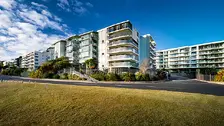The Roadmap to Building a Million-Dollar Property Portfolio in NZ
 By
Trent Bradley
·
13 minute read
By
Trent Bradley
·
13 minute read

A million-dollar property portfolio sounds impressive, and it represents a significant wealth milestone for New Zealand investors. But what does it actually take to build a portfolio worth seven figures? More importantly, what does a million-dollar portfolio actually mean in practical terms, and how long does it realistically take to achieve?
Table of Contents
- Understanding What a Million-Dollar Portfolio Actually Means
- The Typical Timeline: 10-15 Years
- Phase One: Foundation Building (Years 0-3)
- Phase Two: Momentum Building (Years 4-8)
- Phase Three: Optimization and Maturation (Years 9-15)
- Key Success Factors Throughout the Journey
- Common Mistakes That Derail Progress
- Beyond the Million-Dollar Milestone
- The Luminate Financial Group Approach
- Frequently Asked Questions
Key Takeaways
- Building a million-dollar property portfolio (total property value, not equity) realistically takes 10-15 years for most New Zealand investors starting from zero, progressing through foundation building (years 0-3), momentum building (years 4-8), and optimization phases (years 9-15)
- Phase One (years 0-3) focuses on saving first deposit ($80,000-$120,000), purchasing first investment property ($400,000-$600,000), and building $50,000-$80,000 equity through appreciation and principal reduction
- Phase Two (years 4-8) leverages accumulated equity to acquire properties 2-4, crossing the million-dollar threshold by year 8 with 3-4 properties worth $1.2-$1.6 million combined and $400,000-$600,000 total equity
- Phase Three (years 9-15) shifts from rapid acquisition to portfolio optimization through strategic property reviews, targeted debt reduction improving cash flow, selective additional acquisitions, and refinancing capturing better rates
- Key success factors include consistent 10-15 year commitment through market cycles, strategic property selection meeting clear criteria, financial discipline subsidizing negative cash flow averaging $8,000-$15,000 annually per property initially, continuous education, and professional support teams
- Common mistakes derailing progress include impatience causing excessive leverage and poor property selection, neglecting cash flow creating unsustainable subsidies, inadequate due diligence discovering expensive surprises post-purchase, and emotional decision-making rather than criteria-based selection
At Luminate Financial Group, we work with investors at every stage of portfolio development, from those purchasing their first investment property to those managing multi-million-dollar portfolios generating substantial passive income. Through these experiences, we've identified clear patterns and pathways that successful investors follow to reach and exceed the million-dollar portfolio milestone.
The good news? Building a million-dollar property portfolio is achievable for many New Zealand investors with moderate incomes and disciplined strategies. It's not reserved for the wealthy or those with exceptional circumstances. The journey requires time, strategic thinking, and consistent execution, but the destination is within reach for those willing to commit to the process.
Let's map out the realistic roadmap from zero to a million-dollar property portfolio in New Zealand.
Understanding What a Million-Dollar Portfolio Actually Means
Before diving into the roadmap, let's clarify what we're discussing. A "million-dollar portfolio" typically refers to the total value of your investment properties, not your equity position.
If you own three properties worth $400,000, $350,000, and $300,000 respectively, you have a $1.05 million portfolio. However, if you owe $280,000, $245,000, and $210,000 on these properties, your actual equity is only $335,000 – still significant, but far less than a million dollars in wealth.
This distinction matters because reaching a million-dollar portfolio value is considerably easier than accumulating a million dollars in equity. In appreciating markets, leverage means your portfolio value can reach seven figures while your actual equity contribution remains far lower.
For this roadmap, we'll focus on building a portfolio with a combined value exceeding one million dollars, which typically requires accumulated equity in the $300,000 to $500,000 range depending on your leverage levels.
The Typical Timeline: 10-15 Years
For most New Zealand investors starting from zero investment property experience, building a million-dollar portfolio typically takes 10-15 years. Some achieve it faster with exceptional circumstances, while others take longer due to market conditions or conservative approaches. But 10-15 years represents a realistic expectation for consistent, strategic investors.
This timeline assumes moderate income levels (starting around $70,000-$100,000), disciplined savings, strategic property selection, and average market conditions delivering 5-6% annual appreciation. Let's break down how this journey typically unfolds.
Phase One: Foundation Building (Years 0-3)
The foundation phase focuses on preparing for and executing your first investment property purchase. This period is critical because decisions made here influence your entire future journey.
Financial Preparation
Before purchasing your first investment property, establish solid financial foundations. This means saving your deposit, typically $80,000 to $120,000 for properties in the $400,000 to $500,000 range once you include purchase costs. Most investors need two to three years of focused saving to accumulate this capital unless they have substantial equity in owner-occupied properties.
Simultaneously, optimize your financial position by maximizing your credit score, reducing or eliminating consumer debt, increasing your income through career advancement or side income, and building emergency funds covering at least six months of expenses plus property holding costs.
Banks assess your entire financial position when approving investment lending. Clean credit, stable employment, minimal consumer debt, and demonstrated savings discipline dramatically improve borrowing capacity and interest rates offered.
Education and Strategy Development
Use this preparation period for intensive education. Read extensively about property investment, attend seminars or workshops, connect with experienced investors, and study your target markets thoroughly. This education prevents costly mistakes and builds confidence for decision-making.
Develop your investment strategy during this phase. Will you prioritize capital growth or cash flow? Which locations align with your strategy? What property types suit your budget and goals? Having clear criteria before you start searching prevents emotional decision-making when opportunities arise.
First Property Purchase
Your first investment property represents the most significant milestone in building your portfolio. Take time to get this decision right. Look for properties meeting your investment criteria in locations with strong fundamentals, priced at or below market value if possible, capable of attracting quality tenants, and ideally generating acceptable rental yields even if not immediately cash flow positive.
Most first-time investors purchase properties in the $400,000 to $600,000 range, balancing affordability with quality. This price range provides access to properties in reasonable locations capable of appreciating while remaining within modest borrowing capacity.
After purchasing your first property, focus on being an excellent landlord. Place quality tenants, maintain the property well, and establish good systems for rent collection, maintenance management, and record keeping. These early experiences teach valuable lessons that serve you throughout your investment journey.
End of Phase One Milestones
By the end of year three, you should own one investment property worth approximately $450,000 to $550,000 (assuming you purchased for $450,000-$500,000 and experienced modest appreciation), have stable tenancy generating consistent rental income, have established property management systems and relationships, and have accumulated $50,000 to $80,000 in equity through deposit contribution, market appreciation, and principal reduction.
This foundation, while modest, provides the platform for accelerated growth in subsequent phases.
Phase Two: Momentum Building (Years 4-8)
Phase two focuses on leveraging your accumulated equity and experience to accelerate portfolio expansion. This is where your property portfolio begins growing more rapidly as you benefit from compounding equity growth across multiple properties.
Leveraging Equity for Property Two
After three to four years, your first property has likely appreciated and you've paid down some principal. Combined, you might have $80,000 to $120,000 in available equity (equity minus required buffers). This equity, combined with continued savings, funds the deposit for your second investment property.
Your second property purchase benefits from your experience. You understand the buying process, know what to look for during inspections, have established professional relationships with mortgage brokers and lawyers, and have realistic expectations about property management and returns.
Many investors make their second purchase more confidently and quickly than their first, having overcome the psychological barriers and knowledge gaps that slowed initial action.
Strategic Portfolio Diversification
Consider diversifying your second purchase from your first. If your first property was in Auckland prioritizing capital growth, perhaps your second is in a regional center offering superior rental yields. If your first was a house, maybe your second is a townhouse or apartment. This diversification spreads risk and captures different return profiles.
However, avoid diversifying into property types or locations you don't understand. Diversification should be strategic, not random.
Properties Three and Possibly Four
Years five through eight often see the most rapid portfolio expansion. Your first property has appreciated significantly, your second property is building equity, you've refined your property selection criteria, and you've established efficient systems reducing time requirements per property.
During this phase, many investors acquire properties three and four, funded by accumulated equity across existing properties and continued savings. Your portfolio value might grow from $500,000 at year four to $1.2-$1.5 million by year eight, crossing the million-dollar threshold.
This growth comes from both new acquisitions and appreciation across all properties. Four properties each appreciating 5-6% annually compound rapidly. Properties purchased for $500,000 and held for five years grow to approximately $650,000 each, meaning four such properties represent a $2.6 million portfolio even before considering additional acquisitions.
Managing Increased Complexity
As your portfolio grows, management complexity increases. You're now dealing with multiple properties, tenants, property managers, and mortgage relationships. Systems become essential. Implement robust accounting and record-keeping systems, establish clear communication protocols with property managers, develop systematic review processes for property performance, and build relationships with reliable tradespeople and service providers.
Many investors engage accountants specializing in property investment during this phase, ensuring tax optimization and compliance as portfolio complexity increases.
End of Phase Two Milestones
By year eight, successful investors typically own three to four investment properties with combined value exceeding $1.2 to $1.6 million, have accumulated equity of $400,000 to $600,000 across the portfolio, have established efficient management systems enabling relatively passive oversight, and are experiencing improving cash flow as older properties mature and rents increase.
You've crossed the million-dollar portfolio threshold and established momentum for continued growth if desired.
Phase Three: Optimization and Maturation (Years 9-15)
Phase three shifts focus from rapid acquisition to portfolio optimization, cash flow improvement, and strategic debt reduction. Your portfolio has reached or exceeded the million-dollar milestone, and attention turns to maximizing performance and preparing for eventual financial independence.
Strategic Portfolio Review
Conduct comprehensive portfolio reviews during this phase. Assess each property's performance, capital growth trajectory, rental yields, management requirements, and future potential. Consider whether all properties deserve retention or if some should be sold to fund better opportunities.
Some investors discover that properties acquired early no longer align with their refined strategies or have delivered disappointing performance. Strategic sales and replacements can optimize portfolio composition.
Debt Reduction Strategy
As properties mature and cash flow improves, many investors begin strategic debt reduction. Rather than paying down all properties equally, identify properties closest to positive cash flow and accelerate debt reduction on these specifically. This targeted approach improves overall portfolio cash flow more rapidly than spreading debt reduction evenly.
Alternatively, some investors continue maximizing leverage, using all available equity to acquire additional properties rather than reducing debt. The right approach depends on your goals, age, risk tolerance, and timeline to financial independence.
Refinancing and Portfolio Restructuring
Portfolio reviews often identify refinancing opportunities. Interest rates fluctuate, and your improved financial position since original purchases may qualify you for better rates or terms. Regular refinancing assessments ensure you're not paying unnecessarily high rates on old mortgages.
Some investors restructure ownership structures during this phase, establishing trusts or companies for tax optimization, asset protection, or estate planning purposes. Professional advice is essential for these decisions.
Selective Additional Acquisitions
Many investors continue acquiring properties during phase three, though often at a slower pace than phase two's rapid expansion. You might add one property every two to three years rather than multiple properties within short periods.
These later acquisitions benefit from your substantial experience and refined criteria. You know exactly what you're looking for and can act decisively when suitable opportunities appear.
End of Phase Three Milestones
By year 12-15, successful investors typically own four to six investment properties with combined values of $1.8 to $2.5+ million, have accumulated substantial equity potentially exceeding $700,000 to $1+ million, have optimized portfolio composition through strategic reviews and potential property sales/replacements, are generating improving cash flow as debt reduces and rents increase, and have clear pathways to eventual financial independence as the portfolio matures.
Your million-dollar portfolio is now established and performing, generating both ongoing appreciation and improving income as it matures toward eventually funding your lifestyle without employment income.
Key Success Factors Throughout the Journey
Certain factors consistently distinguish investors who successfully build million-dollar portfolios from those who stall, struggle, or abandon their strategies.
Consistent Long-Term Commitment
Building a million-dollar portfolio requires unwavering commitment through market cycles, economic uncertainties, and personal life changes. Markets will fluctuate, properties will have problems, and progress will sometimes feel frustratingly slow. Successful investors maintain commitment regardless of these challenges.
Strategic Property Selection
Every property purchase matters enormously. Poor selections drag on portfolio performance for years or decades. Successful investors develop and maintain clear property selection criteria, conduct thorough due diligence on every purchase, avoid emotional or impulsive decisions, and walk away from properties that don't meet their standards regardless of time invested in evaluation.
Financial Discipline
Building property portfolios requires ongoing financial discipline including maintaining emergency funds for unexpected expenses, consistently subsidizing negative cash flow when necessary, resisting lifestyle inflation as income increases, and directing surplus income toward debt reduction or additional deposits rather than lifestyle upgrades.
Continuous Education
Property investment landscapes evolve constantly. Regulations change, markets shift, and new opportunities emerge. Successful investors commit to continuous learning through reading, networking, attending seminars, and staying informed about market conditions and regulatory changes.
Risk Management
Smart investors manage risks carefully rather than maximizing leverage at all costs. This includes maintaining diversification across locations and property types, keeping total debt at manageable levels relative to income and equity, ensuring adequate insurance coverage, building financial buffers for market downturns or income disruptions, and avoiding overconcentration in single property types or locations.
Professional Support
Million-dollar portfolios are rarely built alone. Successful investors build teams including accountants specializing in property investment, mortgage brokers with access to multiple lenders, property managers in each investment location, solicitors experienced in property transactions, and financial advisors for holistic planning.
Common Mistakes That Derail Progress
Understanding what derails property portfolio building helps avoid these pitfalls.
Impatience and Overextension
Trying to build portfolios too quickly often results in poor property selection, excessive leverage, unsustainable cash flow positions, or burnout. Building wealth through property requires patience and sustainable pacing.
Neglecting Cash Flow Management
Focusing exclusively on capital growth while ignoring cash flow creates vulnerability. Properties with excessive negative cash flow can force sales during downturns or prevent additional acquisitions when opportunities arise.
Poor Property Selection
A few bad property purchases can stall portfolio development for years. Properties in weak locations, significant overpayments, or purchases requiring unexpected major repairs consume capital and attention that could have funded better investments.
Inadequate Due Diligence
Skipping building inspections, failing to research locations thoroughly, or accepting vendor statements without verification leads to expensive surprises after purchase.
Emotional Decision Making
Buying properties because they're "pretty," you're emotionally attached to locations, or you feel pressured by fear of missing out rather than because they meet your investment criteria consistently results in suboptimal outcomes.
Beyond the Million-Dollar Milestone
Reaching a million-dollar portfolio represents a significant achievement worth celebrating. However, for many investors, it's a milestone rather than the final destination. Some continue building portfolios to $2 million, $3 million, or beyond. Others shift focus from acquisition to optimization, debt reduction, and cash flow maximization.
The roadmap beyond one million dollars follows similar principles to reaching it – consistent execution, strategic property selection, financial discipline, and long-term perspective. Each additional property becomes easier as your equity base grows and your experience deepens.
The Luminate Financial Group Approach
At Luminate Financial Group, we help clients navigate each phase of portfolio development from first property through to multi-million-dollar portfolios generating substantial passive income. We emphasize that building property portfolios is a marathon requiring strategic planning, patient execution, and realistic expectations.
The roadmap from zero to a million-dollar portfolio typically spans 10-15 years for most investors, progressing through distinct phases of foundation building, momentum development, and portfolio optimization. This timeline isn't aspirational or pessimistic – it reflects the reality of how property wealth accumulates when combining modest deposits, reasonable leverage, market appreciation, and time.
Some investors achieve million-dollar portfolios faster through exceptional incomes, substantial starting capital, or favorable market timing. Others take longer due to conservative approaches, challenging personal circumstances, or flat market periods. But for the majority of consistent, strategic investors with moderate resources, 10-15 years represents realistic expectations.
The key is starting your journey, maintaining commitment through the phases, making strategic property selections aligned with your criteria, managing cash flow carefully, and viewing the million-dollar milestone as part of a longer wealth-building journey rather than the ultimate destination.
Building a million-dollar property portfolio is achievable for many New Zealanders willing to commit to the process. The roadmap is clear, the strategies are proven, and the destination is within reach. What matters most is taking that first step, then the next, then the next, consistently over years and eventually decades until one day you look up and realize you've built something substantial.
Your million-dollar property portfolio journey can start today. The question is simply whether you're ready to commit to the roadmap and see it through to completion.
Frequently Asked Questions
Is a million-dollar property portfolio the same as having a million dollars in wealth?
No—a "million-dollar portfolio" refers to combined property values, not your actual equity or net wealth. Owning 3 properties worth $400,000, $350,000, and $300,000 ($1.05 million total value) with mortgages of $280,000, $245,000, and $210,000 means your actual equity is only $335,000. Reaching million-dollar portfolio value is considerably easier than accumulating a million in equity because leverage means properties appreciate on full value while you only contributed deposits. Typical million-dollar portfolios have $300,000-$500,000 actual equity depending on leverage levels. Focus on equity growth rather than just total value when measuring wealth—equity represents your actual ownership and ability to access funds through refinancing or sales.
How much income do I need to build a million-dollar property portfolio?
Most successful portfolio builders start with moderate incomes of $70,000-$100,000 individually or $120,000-$160,000 for couples, gradually increasing through career progression over the 10-15 year timeline. Higher starting incomes ($100,000-$150,000+) enable faster portfolio building through absorbing larger negative cash flow across more properties simultaneously, potentially compressing timelines to 7-10 years. Lower incomes ($50,000-$70,000) still enable portfolio building but require: longer saving periods for deposits (3-4 years versus 2-3 years), targeting cash-flow-positive regional properties requiring minimal subsidy, slower acquisition pace (properties every 4-5 years versus 2-3 years), and extended timelines of 15-20 years. Income matters less than financial discipline, strategic property selection, and long-term commitment.
Should I pay off my first property before buying my second one?
No—paying off properties before acquiring more significantly extends portfolio building timelines and reduces total wealth accumulation. Early in your journey (years 0-10), prioritize portfolio expansion using accumulated equity for deposits on additional properties rather than accelerating debt reduction. Example: $100,000 equity after 5 years can either reduce mortgage on property 1 or fund deposit on property 2. Using it for property 2 means you benefit from appreciation on $900,000 total property value (two $450,000 properties) versus $450,000 (one property). Over 20 years at 5% appreciation, two properties grow to $2.4 million versus one property to $1.2 million—double the wealth. Shift toward debt reduction after 15-20 years with 4-6 properties accumulated, strategically targeting properties closest to positive cash flow.
How do I know if I'm on track to reach a million-dollar portfolio?
Benchmark your progress against these milestones: Year 3—own 1 property worth $450,000-$550,000 with $50,000-$80,000 equity, Year 5—own 2 properties worth $900,000-$1.1 million total with $150,000-$250,000 equity, Year 8—own 3-4 properties worth $1.2-$1.6 million with $400,000-$600,000 equity (million-dollar threshold crossed), Year 12—own 4-5 properties worth $1.8-$2.2 million with $700,000-$900,000 equity, Year 15—own 5-6 properties worth $2.2-$2.8 million with $1+ million equity. Falling 1-2 years behind these milestones due to market conditions or personal circumstances doesn't indicate failure—adjust timelines rather than abandoning strategy. Being 3+ years behind suggests reviewing property selection criteria, cash flow management, or acquisition pace.
What if property prices don't grow—can I still build a million-dollar portfolio?
Yes, but timelines extend significantly during flat market periods. Building million-dollar portfolios during stagnant markets relies on: mortgage principal reduction (forced savings averaging $8,000-$15,000 annually per property), rental income growth (typically 2-4% annually even in flat capital markets), strategic property selection identifying undervalued opportunities, and patience waiting for growth resumption. Auckland's 2017-2020 flat period tested investors—those who maintained holdings and continued acquiring properties during stagnation benefited from strong subsequent 2020-2021 growth. Flat periods extending 5-10 years delay portfolio building timelines by similar amounts but don't fundamentally prevent wealth accumulation if you maintain commitment, continue mortgage payments, and avoid panic-selling. Portfolio value reached through appreciation plus debt reduction rather than appreciation alone.
Should I focus on Auckland for growth or regional areas for cash flow when building my portfolio?
Balanced portfolios combining both growth-oriented Auckland/Wellington properties and cash-flow-positive regional properties typically perform best over 10-15 year timelines. Strategy: Properties 1-2 in Auckland/Wellington accepting negative cash flow ($8,000-$15,000 annually) for superior capital growth (6-8% average historically), Properties 3-4 in regional centers (Hamilton, Tauranga, Palmerston North) generating positive or neutral cash flow (5-6% gross yields) supporting negative gearing on growth properties, Properties 5-6 rebalancing based on portfolio performance and market conditions. This approach captures maximum equity growth for future leverage while managing total negative cash flow to sustainable levels. Avoid concentrating entirely in either strategy—all growth properties create unsustainable subsidies exceeding $50,000+ annually across 4-5 properties, while all cash-flow properties sacrifice substantial capital appreciation limiting equity available for portfolio expansion.

Trent Bradley
Trent Bradley is a New Zealand financial advisor specializing in property-backed finance and investment consulting. With over 26 years of experience running his mortgage broking business, he has helped wholesale investors access high-yield property-backed loan opportunities. For the past 12 years, Trent has led Luminate Finance, a New Zealand finance company dedicated to connecting investors with secure property investment solutions.








































